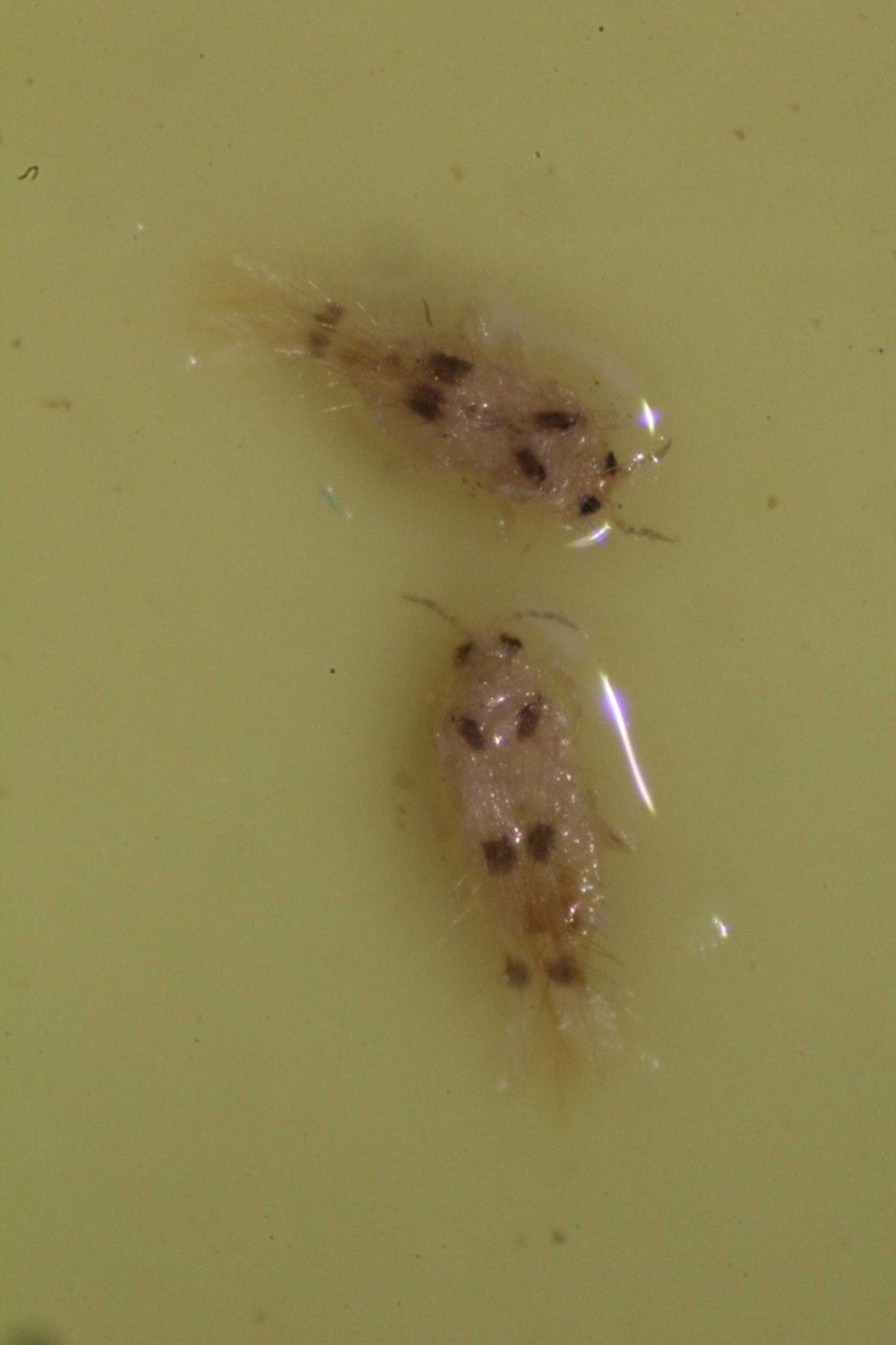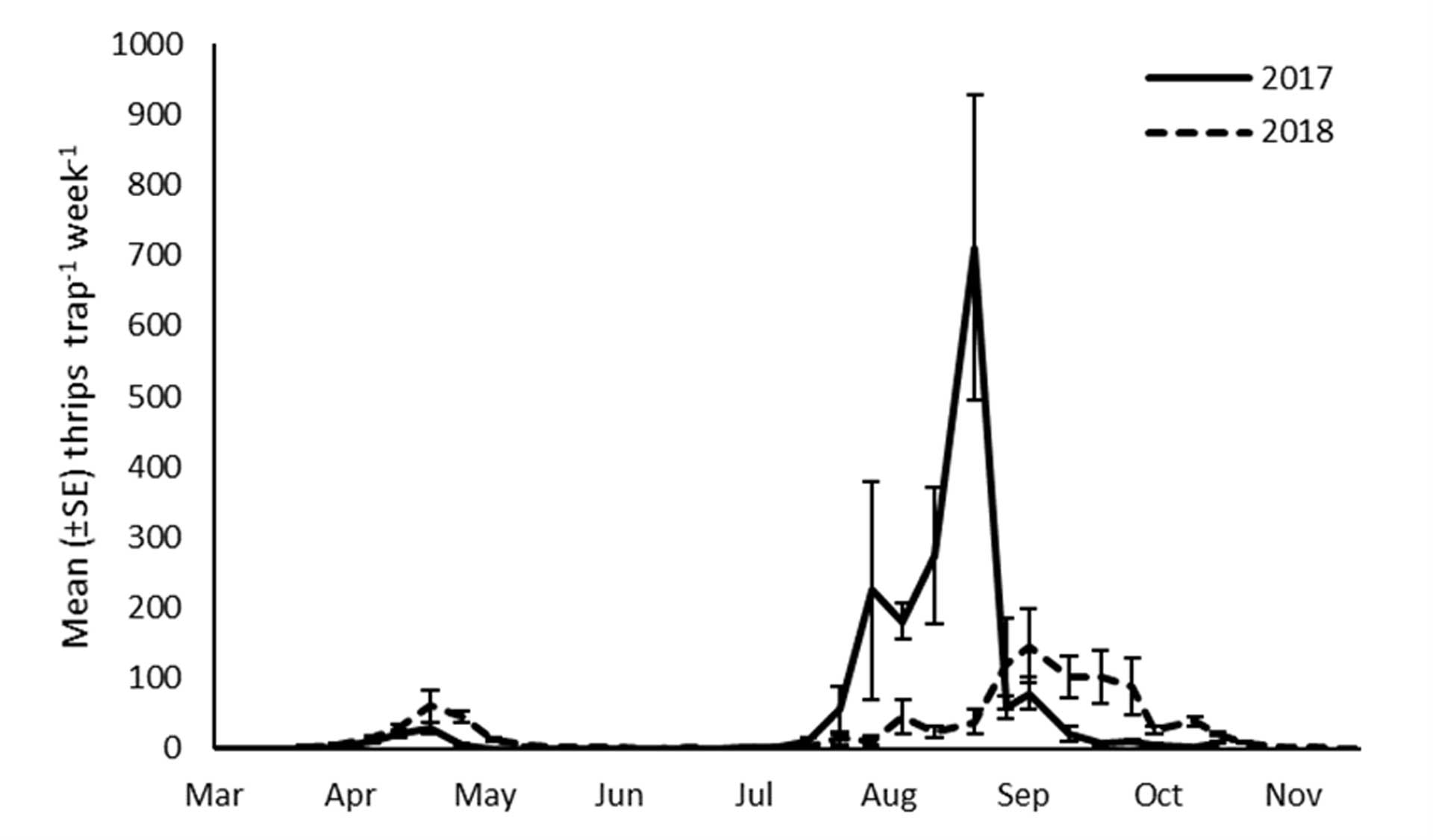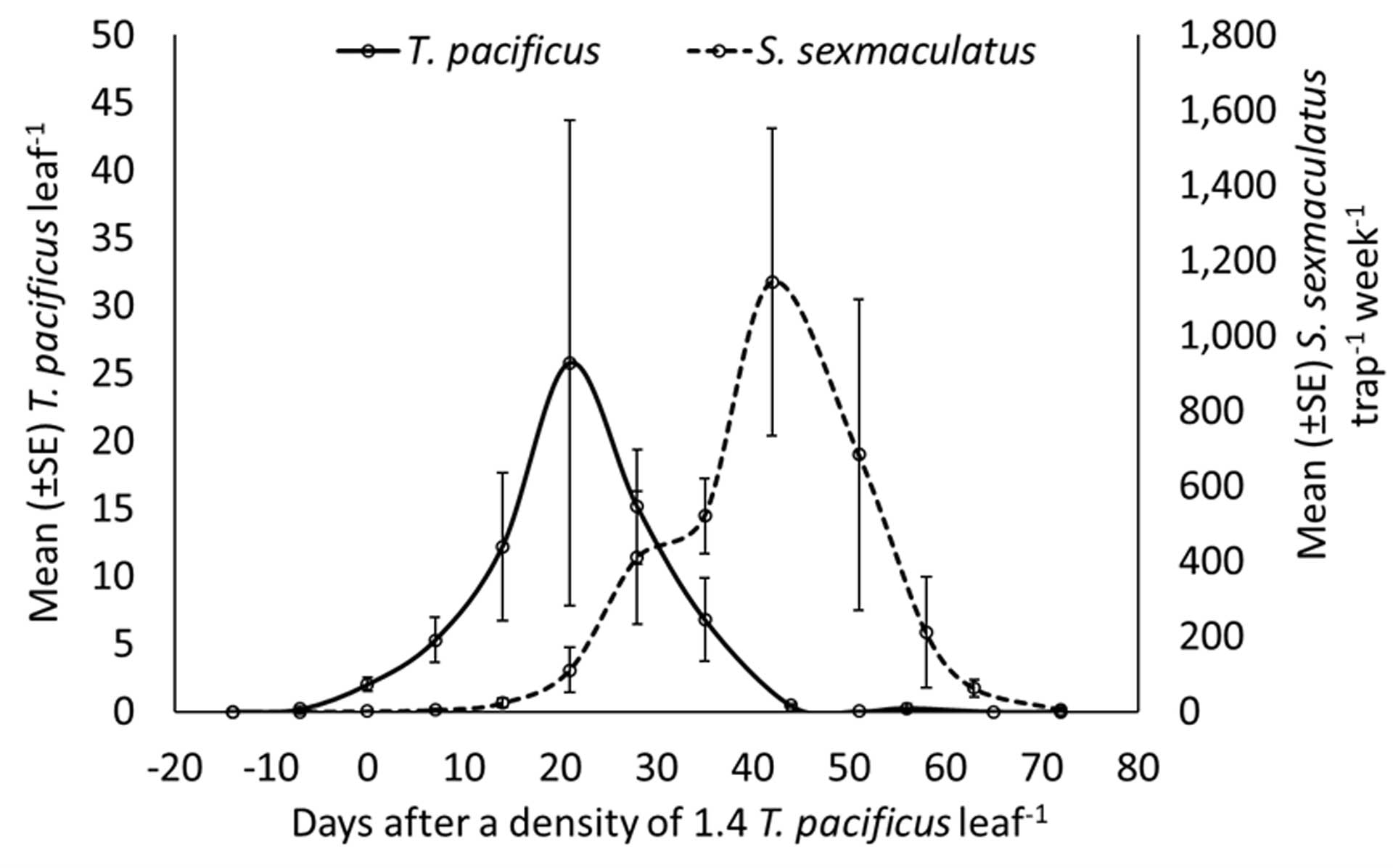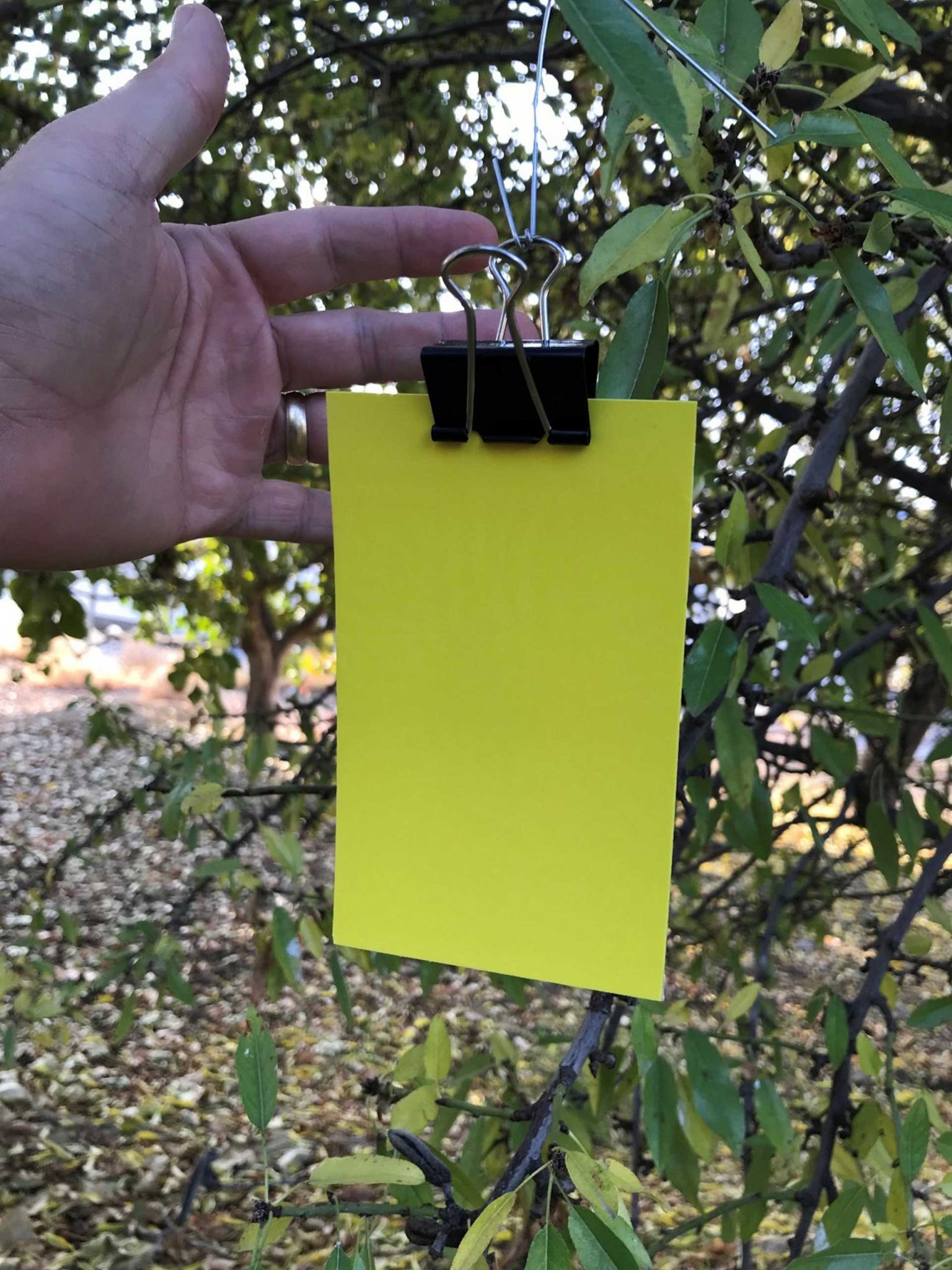Spider mites are a perennial pest of almonds throughout California. They are present in all orchards, in all years and in all parts of the state. However, there are significant differences from year to year and from orchard to orchard in mite density. These differences are driven by ‘push’ factors that promote mites (e.g., hot dry weather, dust and plant stress) and ‘pull’ factors like natural enemies that help control them. Miticides are only needed in cases where the pushes outweigh the pulls.
For several decades, we have measured the ‘push’ side of mite management through presence-absence treatment thresholds. These were developed by Frank Zalom and colleagues in the mid-1980s. They found that if natural enemies are present, treatment with a miticide is needed if 43.6% of leaves are infested. If predators are absent, that treatment threshold should be reduced to 22.0%. At the time, the most common natural enemies were predatory mites (phytoseiids), which were easily monitored through the same leaf sampling program used to monitor mites.
Over the past several years, our team has conducted research to revisit the topic of treatment thresholds. The premise of that research was that much has changed since the 1980s. Yields are higher, the industry has moved southward, and pesticide programs dominated by broad-spectrum organophosphates have been replaced by programs using selective reduced-risk materials. From a natural enemy perspective, almond orchards have become a much ‘greener’ place to live.

What We Know
Research showed that in the presence of natural enemies, almond growers should make a decision to treat mites (action threshold) when there are 1.4 mites per leaf (38% of leaves infested) to prevent mites from reaching a treatment threshold of 5.4 mites per leaf one week later (Fig. 1). This threshold correlated nearly perfectly with the thresholds previously established in 1985 and have been promoted since that time on the UC IPM Program’s Pest Management Guidelines for Spider Mites in Almonds (www2.ipm.ucanr.edu/agriculture/almond/).
However, research also noted significant differences between the 1980s and 2010s regarding biological control. In the 1980s, predatory mites were the predominant predator, but are now much less prevalent. This phenomenon was seen in multiple regions of the state, regardless of the pesticide spray programs being used.


Further investigation revealed the reason: sixspotted thrips (Fig. 2). Once considered an obscure natural enemy that was rarely noticed or written about, this mite predator was now omnipresent and had an equal appetite for both spider mites and predatory mites. Each year, sixspotted thrips adults became active in April and May as overwintering spider mites moved up into the canopy to start feeding (Fig. 3). They continued to build their populations until the mites were gone, at which point they temporarily disappeared. Then, when spider mites returned as the weather turned hot and dusty, and as tree stress increased after hull split, there was about a two-week lag time followed by a return of the thrips. This pattern has been seen repeatedly over the past few years in orchards throughout the state.
Sixspotted thrips feed almost exclusively on mites and consume an average of 50 eggs per day at 86 degrees F. They thrive in hot, dry climates and like to live in tight spaces, such as inside spider mite webbing. The population is comprised of approximately 90% females and can double in size every four days when abundant food is present. This allows them to quickly out-reproduce the spider mites and cause their populations to crash (Fig. 4).
Our understanding of sixspotted thrips biology comes in large part from the development of a cheap, easy, and effective way to assess thrips populations through the use of traps. There is one particular trap called a Predator Trap (Trécé, Inc., available at Great Lakes IPM) that is extremely effective at capturing sixspotted thrips (Fig. 5). Traps can be attached to a binder clip that is attached to a mid-canopy tree limb using an unwound paper clip at a rate of about one per 20 acres. An easy rule to follow is to place one predator trap at the location of each trap used for navel orangeworm. After one week, the trap can be recovered and the sixspotted thrips can be counted. Thrips are easy to identify with a hand lens due to the three spots found on each wing and the fact that they are typically stuck on the trap feet-down (Fig. 2).

Practical Treatment Guidelines
Over the past few years, we have taken more than a thousand measurements of mite density (mites per leaf today) and thrips density (thrips caught per predator trap in the past seven days) and compared that to mite density one and two weeks later. Those data were used to correlate changes in mite density associated with different predator-prey ratios. The results showed that mite density stays the same over seven days when there are 0.42 thrips per trap per week per every one mite per leaf.
Efforts to convert this number into something for practical use by growers yielded two different thresholds for use at different times of the year. First, in the spring, as long as spider mite density remains below 40% of leaves infested, an average of one sixspotted thrips per trap per week is sufficient to predict that spider mites will not exceed a threshold. To the contrary, within a couple of weeks, springtime spider mite density will crash to very low numbers for the late spring and early summer. This phenomenon has become almost universal, such that prophylactic applications of miticides as ‘May sprays’ have become obsolete. Exceptions are when broad-spectrum insecticides are used for pests like leaffooted bug, thus keeping the sixspotted thrips below a density of one per trap per week, at which point spider mites can become a problem.
The second application of our predictive model is for use at hull split. At this time, treatment thresholds are tricky because you cannot exclusively ask if spider mites are at a treatment threshold. You also have to predict if a treatment threshold will be reached during harvest at a point after the last opportunity to apply a miticide with a navel orangeworm spray has passed. In this situation, a modified version of our predictive model showed that if you capture an average of three sixspotted thrips per trap per week, that mite density will stay the same or go down within 14 days, and a miticide will not be needed at any point through harvest. If sixspotted thrips density is below three per trap per week, mites are present and the population is building, and it is the last opportunity to apply a miticide with a hull split spray. Then a treatment is warranted.
Maximizing reliance on biological control is a highly sustainable way to manage spider mites. Sixspotted thrips occur naturally and do not cost anything. Relying on them can save growers thousands of dollars in miticide bills while fulfilling industry goals of maximizing the use of sustainable almond production practices.















